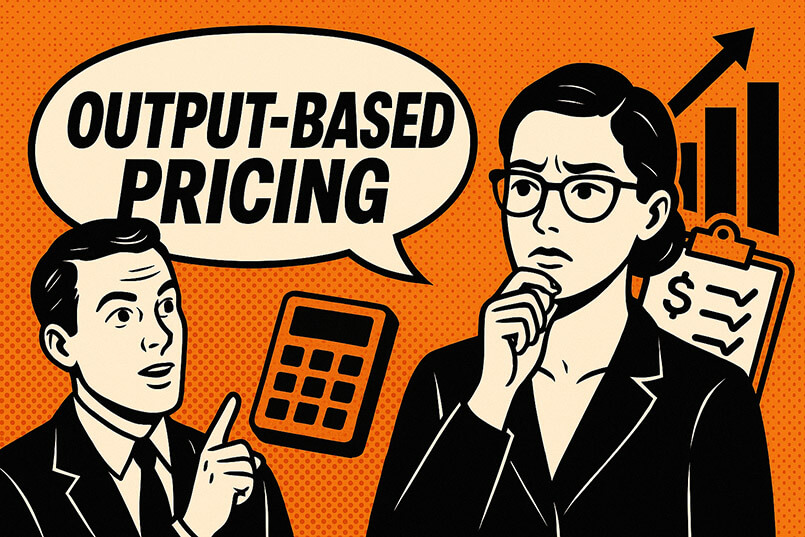This is an edited version of the guide “Advertising Agency Fees – A Comprehensive Guide for Marketing“. To access the Guide, which includes more detailed explanations, examples, strategies and tactics on the topic, please follow the link.
In the recent history of agencies, few topics have raised as much debate, disconsolation and angst as that of (depending on how you prefer to say it) agency fees, compensation or remuneration.
It wasn’t always this way. In earlier times, agencies were generally paid well, and agency pricing was calculated in simple terms against services provided.
Of course, these were also simpler times. Fewer channels of communication; less technology; fewer grey areas of skillsets between agencies and marketers; far fewer competitors; stronger personal relationships and a higher value ascribed to the skills involved in production and deployment of communication assets all gave agencies of the past a clearer run at making a good living.
The industry wasn’t without its problems; but speaking in general terms, agencies did not suffer as much with inadequate remuneration, and marketers did not suffer as much with the negative consequences of poor agency performance, or agency claw-back via opaque revenue streams.
The modern climate of devaluation
In today’s world, the organisational devaluation of marketing, the increased confusion around the role of marketing in an organisation, an insistence on short term gain and the increasing treatment of agencies as unit-driven suppliers rather than human-IP driven partners have all significantly changed the market dynamics between agencies and the organisations they supply.
The net result is that over the last three decades, agency fees have steadily declined in real terms, while scope and demands increased.
Agency staff salaries are lower in real terms than they were 10 years ago, and teams are smaller – and fewer people doing more has led to recorded instances of stress and mental health issues, burnout and even, tragically, suicide.
Advertising, once a glamourous profession for young people on the first step of a career, is now famous for high stress and low entry-level pay, which is an inhibitor to new talent entry.
At the other end of the scale, people in middle age and above find themselves squeezed out or labelled as unaffordable. Ageism, in this industry, is rife; but much of the issue stems from agency fees not being high enough to field senior teams on their key accounts.
This is not to say that agencies themselves are not free from blemish, with the same global consolidation causing, at a global level, a greater focus on numbers and shareholder value, rather than people.
And in a climate of devaluation, many agencies, complicit in signing unsustainable agreements in base fee terms, or forced to meet cut-throat competitive demands in pitches, have created new ways to recoup revenue and margin that rarely benefit their ability to offer objective advice to their clients.
It’s no surprise that in recent years the amount of local, independent agencies has blossomed, started by experienced people who want to return to putting people, work and true agency value first.
Some of what we’re saying here is the way of the world. But when it comes to the treatment of agency fees and agency value, there’s much that can be improved.
We should play with better boundaries
If an agency is paid fairly, it has a far better ability to deliver the value required in the outputs it produces – value that should lead to a commercial return for the client organisation.
It follows that if the agency is also able to share in the success that delivery of great value and commercial returns bring (and shoulder the risk of failure) then it will act accordingly. All of which carries the corresponding upside for the marketing team.
What is striking is that, despite the evolution in agency pricing models, their foundations – by which we mean how they are calibrated – remain largely static.
Traditional Cost Input Models still dominate
Overwhelmingly, agency remuneration is still based on cost inputs, rather than the value of outputs and commercial outcomes.
The media agency is still paid based on the cost input of staff (salaries, overhead recovery, plus mark-up) required to deliver a list of services and has KPIs set largely against the unit cost input of media inventory.
The advertising agency is still paid based on the cost inputs of production and staff servicing across projects or annual scopes of work.
To a certain extent, this makes sense. Of course, an agency needs to have remuneration calibrated against the cost incurred in doing business, plus a sensible profit mark up, aligned to the product being delivered.
However, there’s a problem. In an input-based model, the more hours the agency spends (or the more ‘hours’ it can negotiate into a retainer) the more it is paid.
Therefore, when negotiating a retainer, commission, or service fee, it is actually in the agency’s best interest to demonstrate inefficiency (‘these things take a lot of time, so we need to be paid for those hours’).
At the same time, the marketing or procurement team, realising this, tries to minimise the hours it pays for, even if the agency either must provide services unpaid or supply junior staff to fill the financial hole. Either way, the quality of output diminishes.
Critically, there is also no alignment between remuneration and value, or performance: regardless of how significant the contribution one campaign makes over another, or how valuable one output is over another, or how one piece of work delivers commercial performance over another, the agency will be paid the most money for the campaign that took the most hours to produce, or which spent the highest budget.
At the same time, marketers have never been under more pressure to justify results in commercial terms, directly attributable to marketing.
The importance of transparency, intent and integrity in making change
Remuneration based on value or performance (rather than cost inputs) assumes a level of risk for both agency and the marketer.
It requires a change not just in financial reconciliation and commercial terms, but in attitude and approach between the two parties.
It implies higher-level thinking about the purpose of the partnership, and a mutual willingness to ‘stand and fall’ on shared success and shared failure.
Ultimately, it requires a degree of integrity not always seen in marketer-agency relationships.
For any agency or marketer not prepared to take on board these requirements and implications, a move to a value or performance-based pricing model may not be right.
The commitment requires both parties to be interested in fair and transparent remuneration. The marketer wishing to grind down agency fees, or the agency wishing to maximise hidden profits or benefit via inefficiency, is not right for a value or performance-based approach.
We see many agencies and marketing clients fail one or more of these hurdles. In pitches or remuneration assessments, the initial talk of greater transparency, outcome-based reward, fair remuneration, succeeding and failing together often come undone in the face of reality.
However, when we’ve seen it succeed, it has created longer and more fruitful marketer-agency partnerships.
The rationale for change.
Where the intent is genuine and not forced or fake, the adoption of value and/or performance as the ultimate success metrics against which a partnership and remuneration model is grounded can help.
The two critical elements – value and performance, and the direct attribution of value or performance – have long been used as a stick to beat both marketing teams and agencies.
This is the reason why both agencies and marketers should bother with value or performance-based remuneration and move away from pure ‘cost input’ models.
A move away from cost input models provides helps to provide a common purpose and unite in the same goals.
It helps to enable a two-way relationship with a far higher level of genuine objectivity. It helps to increase efficiency and effectiveness and reduce operational churn.
It motivates both parties to build, share, trust, test, evolve, learn and succeed together.
And it represents a significant part of a move to greater marketing accountability, helping to increase marketing and agency influence with the C-Suite.
Opportunity, risk, reward.
Why, given the obvious opportunity, are marketers and agencies both so reluctant to move to value or performance-based models?
From the perspective of the advertiser, the assumed risk is that the agency that performs extremely well, particularly if paid on commercial results may become a budget-breaker, with simply not enough marketing budget to pay the agency at the end of each accounting period.
From the agency’s perspective, the assumed risk is of course the opposite.
For both, a structured income/expenditure arrangement, like a traditional salaried arrangement between employer and employee, is simply easier to deal with.
It’s easier said than done to commit to a pure-play value or performance-based remuneration model. And, it must be said, the conditions need to be perfect for one to truly work.
However, there are numerous ways to build one, and many hybrid variants that can be explored.
In any event, calibration to circumstance and reality, rather than a black box, is the optimal approach, one which we have applied to many clients over the years as they look to evolve their agency remuneration.
And to commit implies a real shift in mentality between agency and marketer – from supplier to partner.
To access the “Advertising Agency Fees – A Comprehensive Guide for Marketing” Guide, which includes more detailed explanations, examples, strategies and tactics on the topic, please click here.




